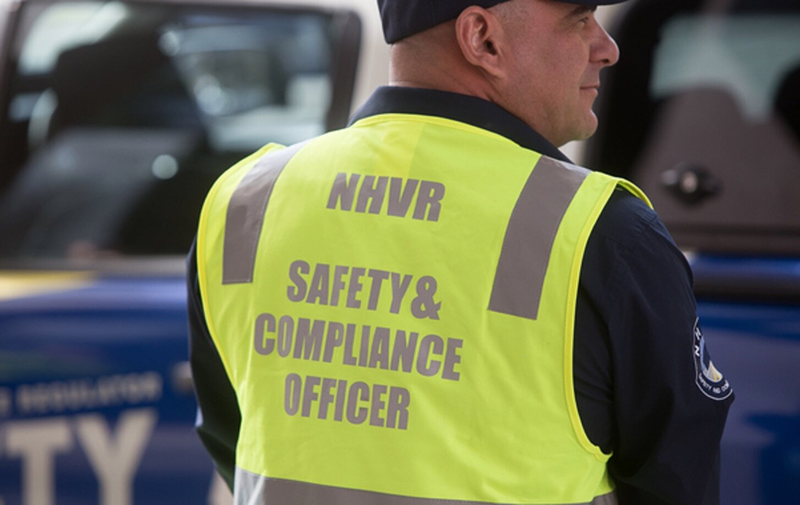Routing for freight is a much more complex task than simply selecting the shortest path on Google Maps. For transport operators, a truck’s route must account for more than just distance - factors like vehicle size, load weight, regulatory permits, road restrictions, and whether the truck is loaded or unloaded can dramatically affect routing decisions. In regions such as Australia and New Zealand, the intricate web of permits, load limitations, and road access constraints make routing an operational challenge. Smarter routing - specifically, permit-aware and load-dependent routing - is now a necessity for fleets seeking efficiency, safety, and compliance.
What are the Limitations of Standard Mapping Tools?
Standard consumer-grade mapping tools are not built for the realities of heavy freight. These platforms generally assume vehicles are uniform in size and capability, and that all roads are equally accessible regardless of load or vehicle dimensions. This oversight becomes problematic when transporting goods using heavy vehicles that require special permits, adhere to weight or height restrictions, or are subject to localized road limitations.
Trucks relying on generic routing may be inadvertently sent through weight-restricted bridges, narrow roads unsuited to large vehicles, or areas where permits are required. These mistakes lead to inefficiencies, safety risks, and compliance breaches. Delays, fines, forced detours, and damage to infrastructure or equipment are just some of the consequences of using inadequate routing tools in a freight context.
What is the Role of Network-Aware Routing?
Unlike simple road maps, network-aware mapping involves a detailed digital representation of freight-legal roadways, complete with attributes like weight limits, clearance heights, permit requirements, and restricted areas. These enriched maps allow a TMS to determine feasible routes not just based on geography, but also based on vehicle characteristics and legal constraints.
Mapping intelligence of this kind is vital in Australia and New Zealand. In both countries, state and regional governments maintain defined freight routes, and off-network travel often requires additional permitting. An effective transport management system must incorporate these networks into its routing engine to ensure compliance and operational efficiency.
What is Load-Dependent Routing?
Load-dependent routing adds another layer of intelligence by adjusting routes based on the current load status of the vehicle - whether it is fully loaded, partially loaded, or empty. This is particularly important because the same road that is accessible to an empty truck may become restricted once that truck is carrying a full load.
Weight restrictions on bridges, speed limits on inclines, and access constraints in certain areas can all vary based on load. A system that accounts for this variation ensures safer and more efficient routing. Load-dependent routing is especially important in industries such as dairy and fuels, where product volume can fluctuate throughout the journey and shift during transit. It allows planners to confidently send trucks through compliant routes at every stage of the trip.
What is Permit-Aware Routing?
Permit-aware routing is the process of planning routes that take into account the legal and operational requirements associated with permitted truck movements on the road network. This involves analyzing the specifications of the truck - including its height, weight, axle configuration, and length - as well as the permits it holds, and matching those against road restrictions such as bridge capacities, height limits, and designated heavy vehicle corridors.
In Australia and New Zealand, where transport networks include extensive regulated corridors and strict permit requirements, the stakes are high. Performance-based standards, heavy-vehicle permit routes, and region-specific road approvals require a high level of routing precision. In Australia, for example, a truck might be legally permitted on a certain road in one state but prohibited from using the same type of road in another. Each region can have its own set of approvals, restrictions, and permit requirements, meaning transport operators must navigate a patchwork of rules that vary from region to region. With permit-aware routing, operators avoid compliance issues, reduce the administrative load of manual checks, and plan routes that are viable, legal, and efficient.

What are the Operational Benefits of Intelligent Routing?
Smart routing that incorporates both permit-aware and load-dependent logic delivers significant value. Operational efficiency improves because trips are planned on legal, viable roads from the outset, reducing delays, avoiding backtracking, and minimizing fuel use.
From a compliance standpoint, the risk of fines or violations is drastically reduced when routing decisions are based on up-to-date regulatory data. Drivers benefit from clearer instructions and fewer on-the-fly adjustments, while planners enjoy better visibility and fewer manual interventions. The overall result is a streamlined operation with lower administrative overhead and higher service reliability.
How Does M2X Embed Load-Dependent and Permit-Aware Routing in its TMS?
Modern TMS platforms must do more than provide basic navigation - they need to embed regulatory intelligence directly into the planning process. M2X does exactly that by routing on the regulatory road networks and factoring in vehicle attributes such as combination type, length, number of trailers, axle configuration, and gross combination mass. This ensures routes are efficient, safe, and legally compliant. Where carriers or operators have obtained special access permits, M2X layers these on top to expand the compliant road network available to each vehicle.
In industries like dairy and fuels, where vehicle weight and access constraints change throughout the day, M2X ensures that every trip is adapted to real-world conditions. For example, in dairy transport, certain customer locations may require the vehicle to be fully loaded to gain enough traction on steep driveways. M2X’s routing engine accounts for these conditions and intelligently places such stops later in the schedule when the truck will be heavier. Likewise, if a road or bridge can only be accessed when a vehicle is empty (low weight), M2X will route the truck through that segment only when conditions are appropriate - avoiding it entirely if the truck is too heavy.

How does M2X Use Mapping Layers and Route Optimisation Intelligence?
M2X also leverages a layered mapping system that overlays different route networks based on truck type, permit class, and weight restrictions. These mapping layers are purpose-built for the unique conditions of Australia and New Zealand. For example, in New Zealand, M2X supports HPMV, 50MAX and 44 tonne routes, displaying them in different colours within the TMS map interface. In Australia M2X takes their regulatory road network and permit data directly from the National Heavy Vehicle Regulator (NHVR), Tasmanian Heavy Vehicle Access Management System (HVAMS) and Main Roads WA to give full coverage across Mainland Australia and Tasmania. The system automatically transitions between lighter and heavier freight networks as needed throughout the suggested driver schedule.
Because the road network is dynamic - with new roads, bridge updates, and mass-limit changes occurring regularly - M2X schedules frequent updates of regulatory road network and permit data. This ensures your drivers are always routed on the most accurate and compliant paths. M2X also deploys new mapping releases on an ongoing basis to keep networks fully up to date.
In addition, the M2X route optimiser goes beyond compliance. It evaluates routes not only against distance and travel time, but also against time windows, site access constraints, vehicle capabilities, current load status, and regulatory requirements. This creates realistic ETAs and ensures the plan is both efficient and legally sound.
Routing compliantly in a TMS is only half the equation. Drivers also need clear guidance on the road. M2X provides a turn-by-turn navigation solution that delivers spoken directions in the cab, using the same regulatory road networks and permits that underpin the planning process.
By combining advanced permit logic, load-aware routing, and layered network mapping, M2X ensures transport operators get more than just routing - they get precision-built plans that improve safety, compliance, and operational efficiency, every day.
Conclusion
In today’s transport industry, where compliance, safety, and efficiency are under constant pressure, smarter routing is no longer optional - it’s essential. Permit-aware and load-dependent routing give fleet operators the tools to navigate complex transport networks without compromising safety or legality.
By moving beyond consumer mapping and embracing intelligent routing systems that understand real-world constraints, operators can avoid costly mistakes and improve operational performance. If your current routing tools aren't accounting for permits, load states, or the detailed road network, it may be time to explore a system that does.
To see how intelligent routing can support your fleet, reduce planning effort, and improve compliance across every journey, get in touch for a free demo of the M2X platform.

.png)


